Oman expands grid connectivity
10 December 2023
Oman’s power and water sector has awarded an annual average of approximately $1.5bn-worth of contracts over the past 11 years – a relatively low value compared to the total awarded every year by some of its GCC neighbours.
However, 2023 can still be considered a good year for the sultanate, as contracts worth an estimated $1.2bn have been awarded.
This is an improvement on the performance of the previous two years, which saw very limited project activity within the sector, with contract awards valued at just $104m in 2021 and $244m in 2022.
Having adopted a policy to not procure further gas-fired thermal power plants, Oman awarded the contracts to develop its second and third utility-scale solar photovoltaic (PV) plants in early 2023.
The Manah 1 and 2 solar PV independent power projects (IPPs) each have a capacity of 500MW. Wadi Noor Solar Company, comprising France’s EDF Renewables and South Korea’s Korea Western Power Company (Kowepo), will deliver and maintain the Manah 1 solar IPP project for 20 years.
Another team, comprising Singapore’s Sembcorp Industries and China-headquartered Jinko Power Technology, will develop the Manah 2 IPP scheme. The country’s first utility-scale solar project, Ibri 2, became operational in 2021.
Oman’s Ministry of Regional Municipalities & Water Resources also awarded a $108m contract for the construction of a flood protection dam in Wadi Ajay Gorge in Muscat in early 2023. The rest of the awarded contracts comprise water and power transmission pipeline projects across the sultanate.
Demand growth
Nama Power & Water Procurement Company (PWP), formerly Oman Power & Water Procurement Company (OPWP), expects peak electricity demand for the main interconnected system (MIS), the sultanate’s main electricity grid, to grow by an average of 3.54 per cent annually from 2022 to 2029, reaching 8,350MW at the end of the forecast period.
Most of this growth is expected to occur in the near term, as the economy recovers from the effects of the Covid-19 pandemic, according to PWP’s most recent Seven-Year Statement, which covers the years 2023-29. It is also higher compared to the 2.5 per cent average annual peak demand growth rate seen between 2015 and 2022.
PWP’s low-case forecast scenario shows an average annual peak demand growth of 1.3 per cent, with the base growing from 6,628MW to just over 7,200MW. A high-case scenario, on the other hand, indicates an annual demand growth of 5.2 per cent, which can drive the demand to reach 9,430MW.
Annual peak demand growth in the smaller Dhofar grid is expected to average 5 per cent between 2022 and 2029.
The first phase of Oman’s North-South Interconnection project, known as Rabt, became operational in November. The 400-kilovolt (kV), 670-kilometre (km) project required an investment of about $966m.
The first phase of Oman’s North-South Interconnection project, known as Rabt, became operational in November
The project enables the MIS, serving the northern half of the Oman grid, to connect with Nihada in Al-Dhahirah Governorate and Duqm Special Economic Zone (SEZ) in Al-Wusta Governorate.
Al-Wusta offers an optimal location for solar and wind projects, which the country aims to develop as part of its green energy ambitions.
Also part of Rabt's first phase, the isolated networks of Petroleum Development Oman and the Rural Areas Electricity Company (Tanweer) in Duqm SEZ, have been interconnected.
A second phase is being planned for Rabt. To be launched later this year, it will comprise a 500km, 400kV transmission line from Duqm to Dhofar.
Water requirements
Peak water demand in the MIS is expected to increase by an average of 2 per cent annually between 2022 and 2029, while peak water demand in Dhofar is expected to grow by an average of 7 per cent a year.
To meet the expected demand rise in the MIS, several independent water projects are being developed or planned. These include the Barka 5 scheme, which has a capacity of 100,000 cubic metres a day (cm/d) and is expected to come online in 2024. Ghubrah 3, which has three times as much capacity, is expected to be operational two years later.
A third project, a replacement capacity for the Barka zone of about 102,000 cm/d, is also expected to be added in 2024.
Future projects
In addition to the second phase of Rabt, Oman is in the early procurement phase of several solar and wind projects, in line with meeting demand growth and replacing expiring contracted capacity.
The power and water purchase agreement for the gas-fired Barka 2 independent water and power facility, for instance, expires in 2024, while the contract for the Barka 3 IPP expires in 2028.
KPMG Lower Gulf, a subsidiary of the Netherlands-based consultancy company, has been selected to provide financial advisory services to Nama PWP for the Ibri 3 solar IPP, which will have a capacity of 500MW. Ibri 3, along with the planned 100MW Jalaan Bani Bul Ali wind power project, will cater to the MIS.
Another key scheme being planned to connect to the MIS is Oman’s first waste-to-energy plant in Barkah. When complete, the facility is expected to treat 4,500 tonnes of municipal waste a day, produce 130MW-150MW of energy, and reduce the carbon footprint of Oman's landfills by 1.3 million tonnes annually.
For the Duqm grid, a 100MW wind IPP is being planned, in addition to a potential concentrated solar power plant. These plants are expected to become operational in 2026 and 2028, respectively. A 100MW wind project is also being planned for Dhofar, although there has been no fixed target for when it is expected to become operational.
In May, it was also announced that Oman Electricity Transmission Company is planning a second link to the GCC grid. The planned 400kV power transmission link is scheduled to start operations in the first quarter of 2026.
Hydrogen hubs
There are major plans to develop green hydrogen hubs in Duqm and Dhofar, in line with Oman's ambition to produce up to 1.25 million tonnes a year of green hydrogen by 2030.
The proposed projects will integrate renewable energy plants that will supply power to the electrolyser plants, which split water into hydrogen and oxygen, as well as the other units of the facilities.
The government has so far awarded land concessions to international consortiums looking to develop integrated green hydrogen and ammonia facilities in the country.
The programme will have a potentially significant impact in terms of Oman’s future gross renewable energy capacity growth, with some of the earliest announced projects requiring several gigawatts of wind and solar power.
However, since most of the planned projects include captive renewable energy power plants, they will not necessarily affect the Omani utility companies' future capacity procurement plans.
On the other hand, water demand may be affected as the electrolysis plants require pure water to be split into hydrogen and oxygen.
Exclusive from Meed
-
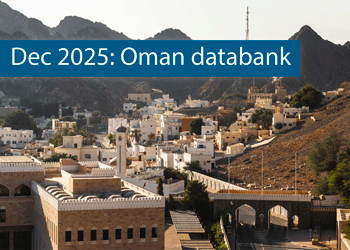 Oman’s growth forecast points upwards
Oman’s growth forecast points upwards24 December 2025
-
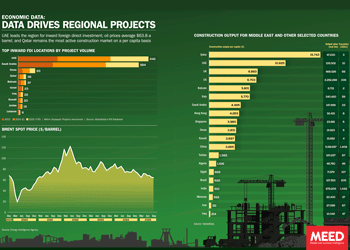 December 2025: Data drives regional projects
December 2025: Data drives regional projects23 December 2025
-
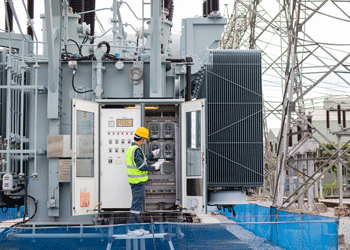 Local firm bids lowest for Kuwait substation deal
Local firm bids lowest for Kuwait substation deal22 December 2025
-
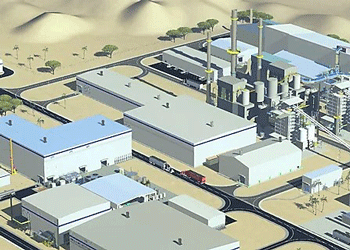 Saudi-Dutch JV awards ‘supercentre’ metals reclamation project
Saudi-Dutch JV awards ‘supercentre’ metals reclamation project22 December 2025
-
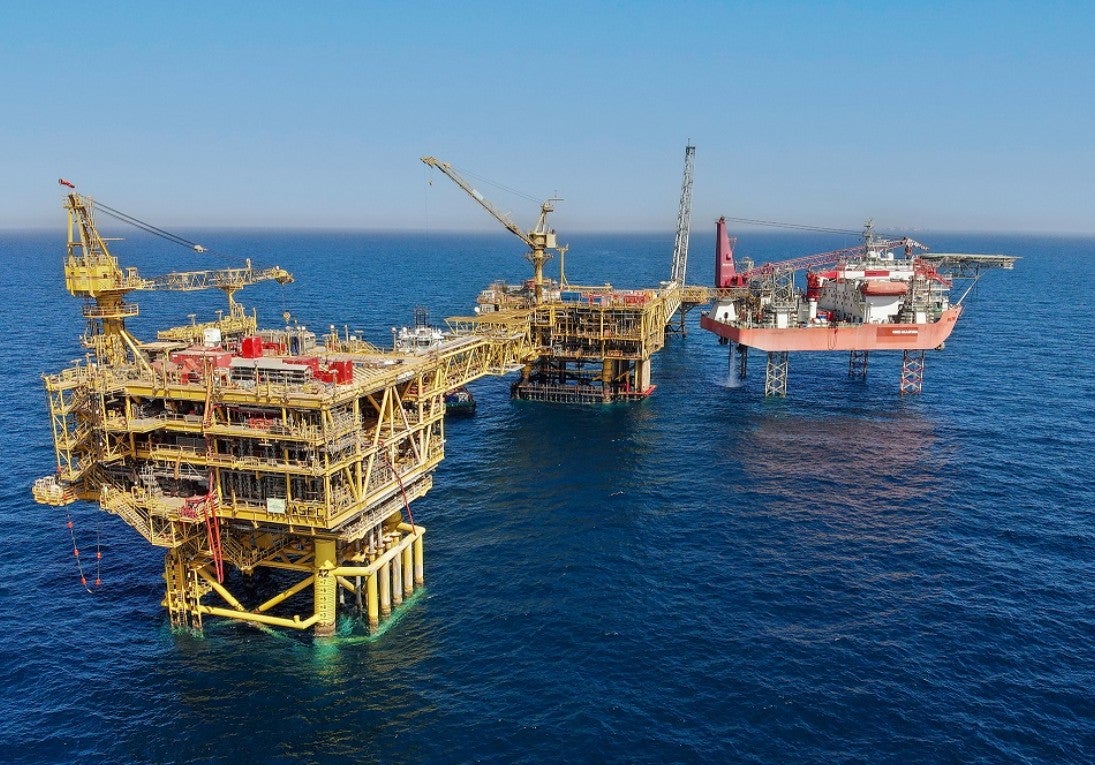 QatarEnergy LNG awards $4bn gas project package
QatarEnergy LNG awards $4bn gas project package22 December 2025
All of this is only 1% of what MEED.com has to offer
Subscribe now and unlock all the 153,671 articles on MEED.com
- All the latest news, data, and market intelligence across MENA at your fingerprints
- First-hand updates and inside information on projects, clients and competitors that matter to you
- 20 years' archive of information, data, and news for you to access at your convenience
- Strategize to succeed and minimise risks with timely analysis of current and future market trends

Related Articles
-
 Oman’s growth forecast points upwards
Oman’s growth forecast points upwards24 December 2025

MEED’s January 2026 report on Oman includes:
> COMMENT: Oman steadies growth with strategic restraint
> GVT & ECONOMY: Oman pursues diversification amid regional concerns
> BANKING: Oman banks feel impact of stronger economy
> OIL & GAS: LNG goals galvanise Oman’s oil and gas sector
> POWER & WATER: Oman prepares for a wave of IPP awards
> CONSTRUCTION: Momentum builds in construction sectorTo see previous issues of MEED Business Review, please click herehttps://image.digitalinsightresearch.in/uploads/NewsArticle/15306449/main.gif -
 December 2025: Data drives regional projects
December 2025: Data drives regional projects23 December 2025
Click here to download the PDF
Includes: Top inward FDI locations by project volume | Brent spot price | Construction output
MEED’s January 2026 report on Oman includes:
> COMMENT: Oman steadies growth with strategic restraint
> ECONOMY: Oman pursues diversification amid regional concerns
> BANKING: Oman banks feel impact of stronger economy
> OIL & GAS: LNG goals galvanise Oman’s oil and gas sector
> POWER & WATER: Oman prepares for a wave of IPP awards
> CONSTRUCTION: Momentum builds in construction sectorTo see previous issues of MEED Business Review, please click herehttps://image.digitalinsightresearch.in/uploads/NewsArticle/15306140/main.gif -
 Local firm bids lowest for Kuwait substation deal
Local firm bids lowest for Kuwait substation deal22 December 2025
The local Al-Ahleia Switchgear Company has submitted the lowest price of KD33.9m ($110.3m) for a contract to build a 400/132/11 kV substation at the South Surra township for Kuwait’s Public Authority for Housing Welfare (PAHW).
The bid was marginally lower than the two other offers of KD35.1m and KD35.5m submitted respectively by Saudi Arabia’s National Contracting Company (NCC) and India’s Larsen & Toubro.
PAHW is expected to take about three months to evaluate the prices before selecting the successful contractor.
The project is one of several transmission and distribution projects either out to bid or recently awarded by Kuwait’s main affordable housing client.
This year alone, it has awarded two contracts worth more than $100m for cable works at its 1Z, 2Z, 3Z and 4Z 400kV substations at Al-Istiqlal City, and two deals totalling just under $280m for the construction of seven 132/11kV substations in the same township.
Most recently, it has tendered two contracts to build seven 132/11kV main substations at its affordable housing project, west of Kuwait City. The bid deadline for the two deals covering the MS-01 through to MS-08 substations is 8 January.
https://image.digitalinsightresearch.in/uploads/NewsArticle/15305745/main.gif -
 Saudi-Dutch JV awards ‘supercentre’ metals reclamation project
Saudi-Dutch JV awards ‘supercentre’ metals reclamation project22 December 2025
The local Advanced Circular Materials Company (ACMC), a joint venture of the Netherlands-based Shell & AMG Recycling BV (SARBV) and local firm United Company for Industry (UCI), has awarded the engineering, procurement and construction (EPC) contract for the first phase of its $500m-plus metals reclamation complex in Jubail.
The contract, estimated to be worth in excess of $200m, was won by China TianChen Engineering Corporation (TCC), a subsidiary of China National Chemical Engineering Company (CNCEC), following the issue of the tender in July 2024.
Under the terms of the deal, TCC will process gasification ash generated at Saudi Aramco’s Jizan refining complex on the Red Sea coast to produce battery-grade vanadium oxide and vanadium electrolyte for vanadium redox flow batteries. AMG will provide the licensed technology required for the production process.
The works are the first of four planned phases at the catalyst and gasification ash recycling ‘Supercentre’, which is located at the PlasChem Park in Jubail Industrial City 2 alongside the Sadara integrated refining and petrochemical complex.
Phase 2 will expand the facility to process spent catalysts from heavy oil upgrading facilities to produce ferrovanadium for the steel industry and/or additional battery-grade vanadium oxide.
Phase 3 involves installing a manufacturing facility for residue-upgrading catalysts.
In the fourth phase, a vanadium electrolyte production plant will be developed.
The developers expect a total reduction of 3.6 million metric tonnes of carbon dioxide emissions a year when the four phases of the project are commissioned.
SARBV first announced its intention to build a metal reclamation and catalyst manufacturing facility in Saudi Arabia in November 2019. The kingdom’s Ministry of Investment, then known as the Saudi Arabian General Investment Authority (Sagia), supported the project.
In July 2022, SARBV and UCI signed the agreement to formalise their joint venture and build the proposed facility.
The project has received support from Saudi Aramco’s Namaat industrial investment programme. Aramco, at the time, also signed an agreement with the joint venture to offtake vanadium-bearing gasification ash from its Jizan refining complex.
Photo credit: SARBV
https://image.digitalinsightresearch.in/uploads/NewsArticle/15305326/main.gif -
 QatarEnergy LNG awards $4bn gas project package
QatarEnergy LNG awards $4bn gas project package22 December 2025
QatarEnergy LNG, a subsidiary of state-owned QatarEnergy, has awarded the main engineering, procurement, construction and installation (EPCI) contract for a major package for the second phase of its North Field Production Sustainability (NFPS) project.A consortium comprising the Italian contractor Saipem and state-owned China Offshore Oil Engineering Company (COOEC) has secured the EPCI contract for the COMP5 package. The contract value is $4bn, with Saipem declaring its share to be worth $3.1bn.
Milan-headquartered Saipem said the contract will run for about five years. The scope of work comprises engineering, procurement, fabrication and installation of two compression complexes, each including a compression platform, a living quarters platform, a flare platform supporting the gas combustion system, and the related interconnecting bridges. Each complex will have a total weight of about 68,000 tonnes.
Offshore installation operations will be carried out by Saipem’s De He construction vessel in 2029 and 2030.
MEED previously reported that the following contractors submitted bids for the NFPS phase two COMP5 package:
- Larsen & Toubro Energy Hydrocarbon (India)
- McDermott (US)
- Saipem/China Offshore Oil Engineering Company (Italy/China)
QatarEnergy LNG, formerly Qatargas, is said to have issued the tender for the NFPS phase two COMP5 package in the first quarter of the year.
Contractors submitted technical bids for the COMP5 package in late June, while commercial bids were submitted by 8 October, as per sources.
Based upon initial evaluation of bids by QatarEnergy LNG, L&TEH has emerged as the lowest bidder for the COMP5 package, followed by McDermott, with the consortium of Saipem and COOEC in third place, MEED reported in late October.
In the weeks following that, the project operator is said to have engaged all bidders for a final round of negotiations, during which the consortium of Saipem and COOEC is believed to have “clinched the deal”, according to sources.
The detailed scope of work on the COMP5 package covers the EPCI work on the following:
- Two gas compression platforms, each weighing 30,000-35,000 tonnes, plus jacket
- Two living quarters platforms, plus jacket
- Two gas flare platforms, plus jacket
- Brownfield modification work at two complexes
NFPS scheme
QatarEnergy’s North Field liquefied natural gas (LNG) expansion programme requires the state enterprise to pump large volumes of gas from the North Field offshore reserve to feed the three phases of the estimated $40bn-plus programme.
QatarEnergy has already invested billions of dollars in engineering, procurement and construction works on the two phases of the NFPS project, which aims to maintain steady gas feedstock for the North Field LNG expansion phases.
The second NFPS phase will mainly involve building gas compression facilities to sustain and gradually increase gas production from Qatar’s offshore North Field gas reserve over the long term.
Saipem has been the most successful contractor on the second NFPS phase, securing work worth a total of $8.5bn.
QatarEnergy LNG awarded Saipem a $4.5bn order in October 2022 to build and install gas compression facilities. The main scope of work on the package, which is known as EPCI 2, covers two large gas compression complexes that will comprise decks, jackets, topsides, interconnecting bridges, flare platforms, living quarters and interface modules.
The gas compression complexes – CP65 and CP75 – will weigh 62,000 tonnes and 63,000 tonnes, respectively, and will be the largest fixed steel jacket compression platforms ever built.
Following that, Saipem won combined packages COMP3A and COMP3B of the NFPS project’s second phase in September last year.
The scope of work on the combined packages encompasses the EPCI of a total of six platforms, approximately 100 kilometres (km) of corrosion resistance alloy rigid subsea pipelines of 28-inches and 24-inches diameter, 100km of subsea composite cables, 150km of fibre optic cables and several other subsea units.
Separately, QatarEnergy LNG awarded McDermott the contract for the NFPS second phase package known as EPCI 1, or COMP1, in July 2023. The scope of work on the estimated $1bn-plus contract is to install a subsea gas pipeline network at the North Field gas development.
In March this year, India’s Larsen & Toubro Energy Hydrocarbon (LTEH) won the main contract for the combined 4A and 4B package, which is the fourth package of the second phase of the NFPS project and is estimated to be valued at $4bn-$5bn.
The main scope of work on the package is the EPCI of two large gas compression systems that will be known as CP8S and CP4N, each weighing 25,000-35,000 tonnes. The contract scope also includes compression platforms, flare gas platforms and other associated structures.
LTHE sub-contracted detailed engineering and design works on the combined 4A and 4B package to French contractor Technip Energies.
NFPS first phase
Saipem is also executing the EPCI works on the entire first phase of the NFPS project, which consists of two main packages.
Through the first phase of the NFPS scheme, QatarEnergy LNG aims to increase the early gas field production capacity of the North Field offshore development to 110 million tonnes a year.
QatarEnergy LNG awarded Saipem the contract for the EPCI package in February 2021. The package is the larger of the two NFPS phase one packages and has a value of $1.7bn.
Saipem’s scope of work on the EPCI package encompasses building several offshore facilities for extracting and transporting natural gas, including platforms, supporting and connecting structures, subsea cables and anti-corrosion internally clad pipelines.
The scope of work also includes decommissioning a pipeline and other significant modifications to existing offshore facilities.
In addition, in April 2021, QatarEnergy LNG awarded Saipem two options for additional work within the EPCI package, worth about $350m.
QatarEnergy LNG awarded Saipem the second package of the NFPS phase one project, estimated to be worth $1bn, in March 2021.
Saipem’s scope of work on the package, which is known as EPCL, mainly covers installing three offshore export trunklines running almost 300km from their respective offshore platforms to the QatarEnergy LNG north and south plants located in Ras Laffan Industrial City.
Saipem performed the front-end engineering and design work on the main production package of the first phase of the NFPS as part of a $20m contract that it was awarded in January 2019. This provided a competitive advantage to the Italian contractor in its bid to win the package.
https://image.digitalinsightresearch.in/uploads/NewsArticle/15305330/main2239.jpg

